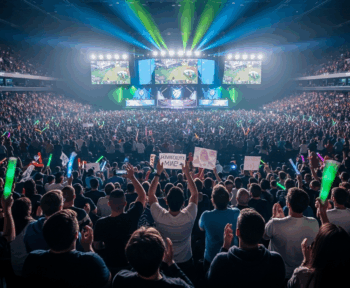HTML5 vs WebGPU Performance Analysis
The landscape of browser-based gaming has undergone a revolutionary transformation with the introduction of WebGPU, a next-generation graphics API that promises to bring native-level performance to web browsers. This technological leap, combined with the maturation of HTML5 gaming frameworks, has positioned browser gaming as a legitimate alternative to traditional downloadable games, challenging long-held assumptions about what’s possible within a web browser1.
The Evolution from Flash to Modern Web Standards
The death of Adobe Flash in 2020 marked not the end but the beginning of a new era for browser gaming. HTML5, which initially struggled to match Flash’s capabilities, has evolved into a robust platform capable of delivering complex gaming experiences. Modern JavaScript engines achieve near-native performance through just-in-time compilation, while WebAssembly enables developers to port existing C++ game engines directly to the browser with minimal performance overhead.
The transition period saw significant innovation in web gaming frameworks. Libraries like Phaser, Three.js, and Babylon.js abstracted away the complexities of WebGL, enabling developers to create sophisticated 3D games without deep graphics programming knowledge. These frameworks have matured to include physics engines, particle systems, and advanced lighting models that rival traditional game engines.
Progressive Web Apps (PWAs) have further blurred the lines between web and native applications. Browser games can now be installed like traditional apps, work offline through service workers, and access device hardware including cameras, accelerometers, and even gamepads. This capability has transformed browsers from mere content viewers into full-fledged gaming platforms3.
WebGPU: The Game-Changing Graphics API
WebGPU represents the most significant advancement in web graphics since the introduction of WebGL over a decade ago. Unlike WebGL, which was essentially OpenGL ES ported to the web, WebGPU was designed from the ground up for modern graphics hardware. It provides direct access to GPU compute shaders, enabling advanced techniques like ray tracing, mesh shaders, and GPU-driven rendering that were previously impossible in browsers.
The performance improvements are substantial and measurable. Benchmarks show WebGPU achieving 3-5x better performance than WebGL in complex scenes with many draw calls. This improvement stems from WebGPU’s explicit API design, which gives developers fine-grained control over GPU resources and eliminates the driver overhead that plagued WebGL. Games that previously struggled to maintain 30fps in WebGL now run at smooth 60fps or even 120fps with WebGPU.
WebGPU’s compute shader capabilities open entirely new possibilities for browser games. Complex physics simulations, procedural generation, and AI behaviors can now run directly on the GPU, freeing the CPU for other tasks. This parallel processing power enables browser games to implement features like realistic fluid dynamics, complex particle systems with millions of particles, and sophisticated procedural world generation that would have been impossible with WebGL alone.
Cross-Browser Compatibility and Standards
The implementation of WebGPU across different browsers has been remarkably coordinated compared to previous web standards. Chrome, Edge, Firefox, and Safari have all committed to WebGPU support, with Chrome and Edge already shipping production-ready implementations. This broad support ensures that developers can target WebGPU with confidence, knowing their games will run across the majority of web browsers.
Fallback strategies have become sophisticated, with games automatically detecting WebGPU support and gracefully degrading to WebGL when necessary. Modern frameworks implement abstraction layers that allow developers to write once and deploy everywhere, with the framework handling the complexity of different rendering backends. This approach ensures maximum reach while taking advantage of WebGPU’s superior performance where available.
The WebGPU specification includes forward-looking features that anticipate future hardware capabilities. Support for ray tracing, variable rate shading, and mesh shaders is built into the API, even though current browser implementations may not fully support these features. This future-proofing ensures that browser games can evolve alongside GPU hardware without requiring major API revisions.
Performance Optimization Techniques
Modern browser games employ sophisticated optimization techniques that rival traditional game development. Texture atlasing reduces draw calls and texture binding overhead, while instanced rendering enables thousands of objects to be drawn with a single command. Level-of-detail (LOD) systems dynamically adjust model complexity based on distance and performance metrics, ensuring smooth framerates across diverse hardware.
WebAssembly has become crucial for performance-critical code paths. Game engines written in C++ or Rust can be compiled to WebAssembly, achieving 85-95% of native performance. This near-native speed enables complex physics simulations, AI systems, and game logic that would be too slow in JavaScript. The combination of WebAssembly for logic and WebGPU for graphics creates a powerful platform for ambitious browser games.
Memory management in browser games has evolved from a significant limitation to a solved problem. Modern browsers provide generous memory limits for web applications, with some allowing games to use several gigabytes of RAM. Sophisticated asset streaming systems load game resources on demand, while compression techniques like Basis Universal reduce texture memory usage by up to 90% without visible quality loss.
The HTML5 Gaming Ecosystem
The ecosystem surrounding HTML5 gaming has matured into a comprehensive development environment. Build tools like Webpack and Vite optimize game assets and code for production deployment. Testing frameworks enable automated testing across different browsers and devices. Analytics platforms provide insights into player behavior and performance metrics directly within the browser environment.
Monetization options for browser games have expanded beyond traditional advertising. Web-based payment APIs enable seamless in-app purchases without leaving the browser. Cryptocurrency integration through Web3 wallets has opened new revenue models, particularly for blockchain-based games. Subscription models using the Payment Request API provide recurring revenue streams comparable to mobile app stores1.
The social features available to browser games now match or exceed native platforms. WebRTC enables real-time multiplayer without plugins, supporting thousands of concurrent players. Social authentication through OAuth allows players to log in with existing accounts from Google, Facebook, or Discord. Leaderboards, achievements, and social sharing are easily implemented through web APIs.
Case Studies in Modern Browser Gaming
Several recent browser games have demonstrated the platform’s capabilities. Krunker.io, a fast-paced first-person shooter, maintains 60+ fps gameplay with dozens of players while running entirely in the browser2. Its success proves that even latency-sensitive competitive games can thrive as browser experiences when properly optimized.
Pokemon Showdown has become the definitive competitive Pokemon platform despite being a browser game. Its sophisticated battle engine, team builder, and ranking system demonstrate that complex game mechanics and persistent progression systems are fully achievable in browsers. The game handles millions of battles monthly without requiring any downloads or installations.
Browser-based game engines have also gained traction. PlayCanvas provides a complete cloud-based development environment where games are built, tested, and deployed entirely within the browser. This approach eliminates the friction of traditional game development, allowing teams to collaborate in real-time without setting up complex development environments.
Mobile Browser Gaming Performance
Mobile browsers present unique challenges and opportunities for game developers. While mobile GPUs are less powerful than desktop counterparts, modern smartphones support WebGPU and achieve impressive performance. Games optimized for mobile browsers can reach billions of devices without app store approval or revenue sharing1.
Touch input optimization has become crucial for mobile browser gaming. Modern frameworks provide sophisticated touch gesture recognition, multi-touch support, and haptic feedback through the Vibration API. Virtual joysticks and buttons can be dynamically positioned based on player preferences, creating control schemes that rival native mobile games.
Battery consumption and thermal management require careful consideration in mobile browser gaming. Adaptive quality systems dynamically adjust rendering resolution and effects based on device temperature and battery level. Frame rate limiting prevents devices from overheating while maintaining playable performance. These optimizations ensure that browser games remain viable for extended mobile gaming sessions.
The Future of Browser Gaming Technology
Emerging web standards promise to further enhance browser gaming capabilities. The WebXR API enables virtual and augmented reality experiences directly in browsers, opening new frontiers for immersive gaming. WebTransport provides low-latency networking for real-time multiplayer games. The File System Access API enables browser games to manage large game files like traditional installed games.
Machine learning integration through WebNN (Web Neural Network API) will enable sophisticated AI behaviors and procedural content generation directly in browsers. Games could implement adaptive difficulty, personalized content generation, and advanced NPC behaviors powered by neural networks running locally on the player’s device.
The convergence of cloud gaming and browser technology represents the ultimate evolution of web-based gaming. As 5G networks proliferate and latency decreases, browser games could seamlessly transition between local and cloud rendering based on device capabilities and network conditions. This hybrid approach would ensure optimal performance regardless of hardware limitations.




